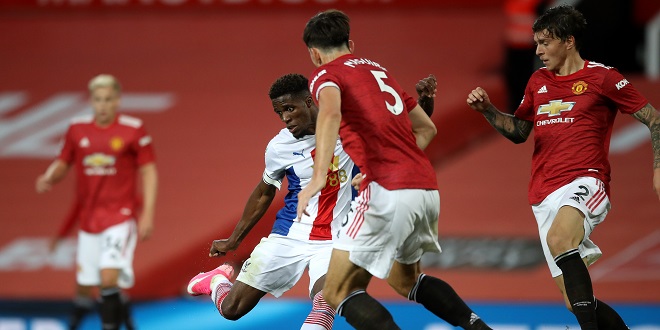Over the next few months, Form Labs – a division of Bettorlogic – will be looking at the best of the weekend’s sporting activity.
This time, it takes more of a ‘lessons learned’ approach now that the ‘Big Five’ football leagues are all back in action. Can the goalfest really continue? Why are we seeing no draws? And are the promoted sides likely to tighten up at the back?
As of last weekend, all of the ‘Big Five’ leagues are up and running albeit behind closed doors. When fans were first barred from stadiums at the back end of last season, there were murmurs that it would have a negative impact on output, though we just witnessed a record breaking weekend in the Premier League with an average of 4.4 goals per game while the Bundesliga followed suit with 4.0.
Will it revert back to the mean?
That said, last weekend was something of an anomaly in that regard and with goals flying in everywhere at the start of this season, it would be a huge surprise if that were to last. Despite a relatively small sample size of 110 matches, behind closed doors football has actually seen very little change in goals so far in the Premier League, with an average of 2.88 goals per game.
Despite that sample being less than a third of the season, if it were to be stretched out over an entire campaign that would be the highest scoring campaign in Premier League history, though taking last season’s results alone there was no change at all in goals before or after the break, with a 2.72 ratio with or without fans in the ground.
This could spell good news for the bookies as everyone jumps on the goal hype, though we’d expect the current numbers to drop back down relatively sharply.
An evident change is the timings of goals scored in matches. 40 of the 67 Premier League goals so far have come in the second half (59.7%) and while that is a bigger percentage than usual, there has still been an unusually high number of chances taken in the opening 45 minutes.
27 first half goals so far is at an average of 1.5 per match, while over the past decade that average has been 1.22 which, in theory, implies an even greater output in the second half.
2.2 second half goals this season is massively up on the 10 year average of 1.52, which would suggest a correlation between first half and second half output and it might be worth seeing how the goals market reacts at half time of this weekend’s games.
No draw despair for sportsbooks
One area where the bookies haven’t been having joy is with the match outcomes. Stalemates in football are a bookies’ best friend with them more often than not putting money straight into their back pocket.
It’s therefore more of a waiting game for them in the Premier League at the minute with no draws being seen as of yet after 18 games. If it wasn’t for a Crystal Palace win at Old Trafford, a substantial amount of liability would’ve been paid out.
However, it certainly isn’t a time to panic for sportsbooks as the percentage of draws in the Premier League since the start of the 2000/01 season has been 25.12%, with the highest amount in a single campaign being seen a decade ago (29.21%) and the lowest just two seasons ago (18.68%). That average jumped straight back up to 24.21% last term and with such a small spread across the individual seasons, we can be fairly confident this will revert to the mean once again.
Of course, this season is obviously different due to the current crowdless stadiums, although looking at the sample of 92 matches that were played on the return of the league from COVID last season, we still saw a strong 20 (21.74%) ending in draws and we have reason to believe that the stalemates aren’t being hindered by the empty stadiums.
In fact, the last time England’s top division saw a ‘draw drought’ came back in 2009/10, when it took until Gameweek 3 before the first stalemate. Indeed, there went onto be as many as 96 draws (25.26%) that season, a figure above the 20-year average and we’d certainly be looking for a match or two to finish all-square this weekend given we’ve never got to the end of this gameweek without one or two games finishing that way.
Defensive frailties in promoted sides
Leeds United have put on a show on their return to the top flight, with the 14 goals seen across their two games so far the highest in the division. While they’ve impressed going forward, with only Leicester scoring as many as Marcelo Bielsa’s men, they’ve also proven to be leaky at the back, but they’re not the only newcomers who are struggling defensively.
Promoted sides this year have conceded a whopping 32.8% of all the goals in the league. For context, the average percentage of cumulative goals the promoted sides concede is 17.6% since the 2014/15 season, while 18.6% that year is the most in that time.
What’s noticeable is how consistent they’ve been throughout those years, with the range just 3% from 15.6% to 18.6%, showing a strong indication that Fulham, West Brom and Leeds will start to tighten up as the season goes on and could hold some serious value in that department going forward.
What we’ve learned so far…
- Man City continued their opening game heroics with a 3-1 win away at Wolves, taking their winning run to 10 on the bounce now
- Mo Salah equalled Teddy Sheringham’s record of scoring in four consecutive opening day matches
- There’s been a 23% increase in Premier League first half goals from the average for the decade, leading to a greater 45% increase in second half goals.
- Nearly ⅓ of Premier League goals this season have come against promoted teams, which is nearly double the average over the past six seasons.
- We’ve gone two full gameweeks in the Premier League without a draw, we haven’t had three this decade.
Stat of the day
Barcelona hold La Liga’s record for most consecutive wins on the opening day, managing 10 in a row from 2009 to 2018, producing eight wins to nil and scoring an average of 3.8 goals per game over this period.
Form Labs delivers bespoke editorial covering a variety of sports to a number of sportsbooks. For further details contact Nick Haynes on [email protected].










